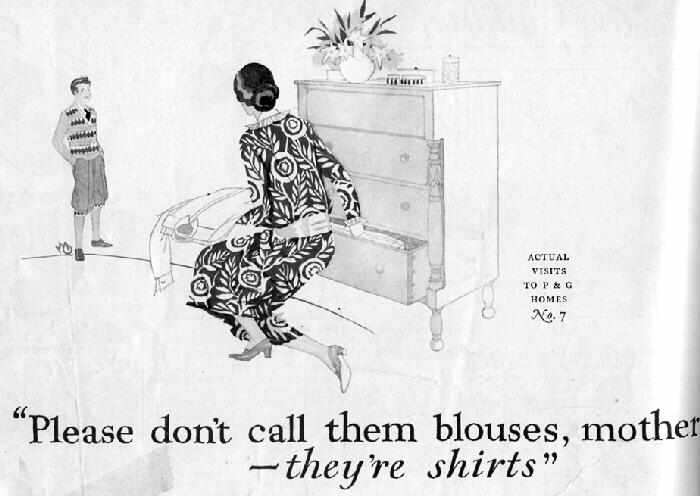
Figure 1.--Here we see a P & G ad from 1926 that perports to be a realistic visit to an American home. It shows the changing convention in the use of the word "blouse" among the youinger genetration.


Figure 1.--Here we see a P & G ad from 1926 that perports to be a realistic visit to an American home. It shows the changing convention in the use of the word "blouse" among the youinger genetration. |
Procter and Gamble and other soap and household product mnanufactuers were major advertizers. Here we see a Procter and Gamble ad which appeared in the The Youth's Companion (1926). The ad makes an interesting point about boys' attitudes toward their own clothes as they grow up. We have illustrated here a little-known point about rites of passage in regard to boys' shirts in America during the 1920s.
Procter and Gamble was and continues to be one of America's most important companies manufacturing soaps and other household products.
This P&G ad appeared in The Youth's Companion November 11, 1926, p. 870. The image here is actually part of a larger ad advertising the laundering properties of P&G soap products. This part is hardly relevant to HBC so we have cropped everything but the part of the ad that relates to boys' clothing. Note that this ad was one of a series that Procter and Gamble billed as "Actual vistits to P & G homes". This was No. 7 of the series.
The Youth's Companion" described itself as "An Illustrated Weekly Paper For Young People and the Family." It was established in 1827. The magazine was published in Boston, Massachusetts, by the Perry Mason Company, 201 Columbus Avenue. It appeared under this title until 1929. It was in the late 19th century one of the most popular weekly periodicals in America and known for the quality of the writing. The magazine catered to teen-age boys and girls especially, containing articles on sports, on hobbies, and on various literary and cultural interests. But it was really a family magazine and had many advertisements for clothing, both adult and children's. The magagazine had a very strict policy about the advertising carried because its readers were mostly children.
The image shows a mother opening a chest of drawers to take out a shirt for her son, who looks as though he is about 12 or 13. She has just referred to the garment as a "blouse" (the term for a junior boy's shirt often made with waist buttons for attaching short pants or knickers). The boy, who is too old for "blouses" and insists that he now wears "shirts," responds, "Please don't call them blouses, mother--they're shirts". The mother then admits that she has used the wrong term: "Of course, Tommy calls them shirts since he has grown up so fast." She has simply reverted to the
term blouse out of habit, not having noticed that her son is now a little too old to be wearing blouses and wears boys' shirts that are simply smaller versions of adult men's shirts. Boys are very sensitive about being kept in clothes that are too juvenile for them and often want to push the transition faster than their parents do. Tommy is still too young to wear long trousers. Note that he wears knickers with cuffed knee socks. But even though he won't
get his long trousers for several more years, at least he no longer wears little-boy button-on trousers and has exchanged above-the-knee knickers with long stockings for a slightly more grown-up style--knickers that come below his knees and that can be worn with knee socks. So the ad respresents him as an adolescent going through an in-between stage of growth from small boy to
highschool teenager. Much of this age-grading in boys' clothing has
disappeared in the 21st century in which, except for very little boys, age has little to do with the style of the clothing worn.
Perhaps the most famous blouses worn by American boys were the Fauntleroy blouses with lace or ruffled collars during the 1880s and 90s. Most of the these were blouses with attached collars and cuffs. All were long sleeves. Some of the lace collars pinned on, but many of the large collars seen in the old photgraphs are blouses with attached collars. These blouses came in a wide variety of styles. They were most notable for the sometimes huge size of the collar and matching cuffs. This contrasts with the Eton collars which almost alwats were detachable collars. Yonger boys increasing in the 1930s began wearing the American version of an Eton suit. The first ones appear to have been worn with detachable Eton collars, but soon blouses with small Eton-style collars appeared. Gradually the Peter Pan collar began to replace the Eton collar wore with these suits. Some American boys wore blouses until about the 1980s when they became less common. Blouses were mostly worn by boys from affluent families, primarily by boys not yet of school age. A few school age boys to about 6 or 7 might wear blouses. Most of the older boys wearing blouses wore ones with Peter Pan collars often with Eton suits. By the 1980s, blouses were only worn by very young children or for formal occasions like weddings. radually the Peter Pan collar began to replace the Eton collar wore with these suits.
Navigate the Boys' Historical Clothing Web Site:
[Return to the Masin 20th century ad pages]
[Return to the Main advertisement page]
[Introduction]
[Activities]
[Biographies]
[Chronology]
[Clothing styles]
[Countries]
[Essay]
[Literary]
[Bibliographies]
[Contributions]
[Essays]
[FAQs]
[Glossaries]
[Satellites]
[Tools]
[Boys' Clothing Home]
